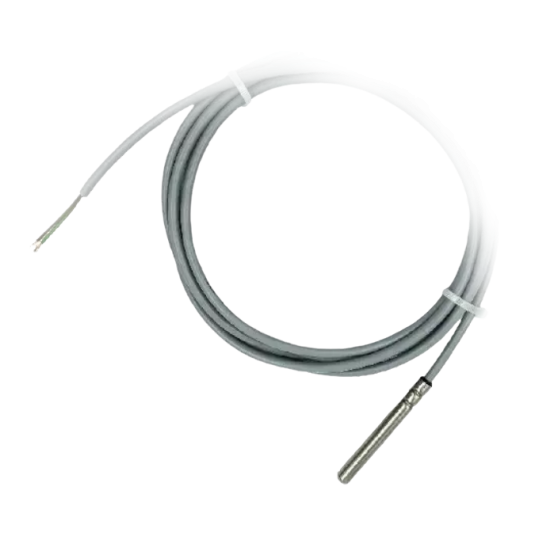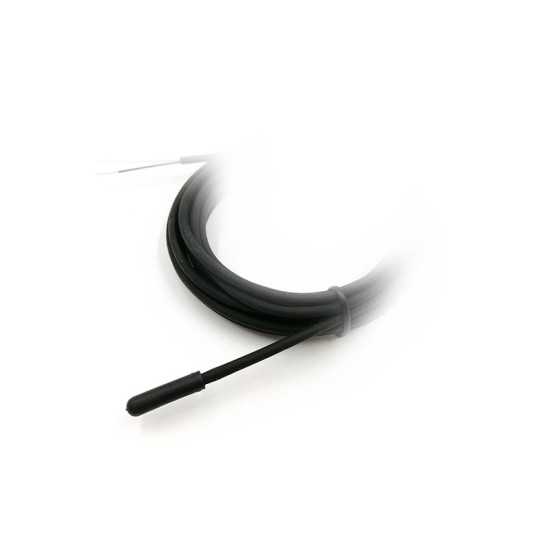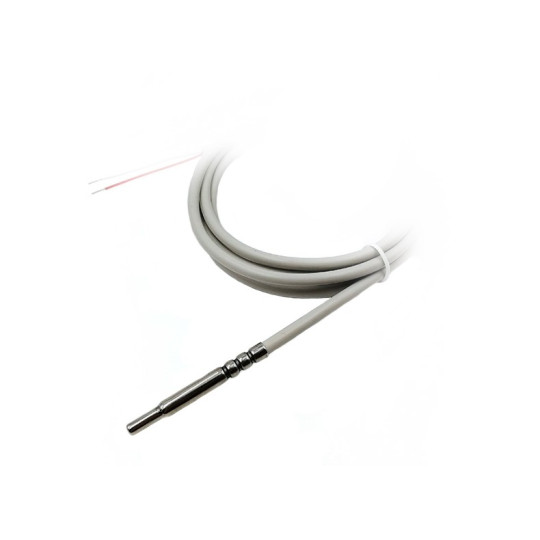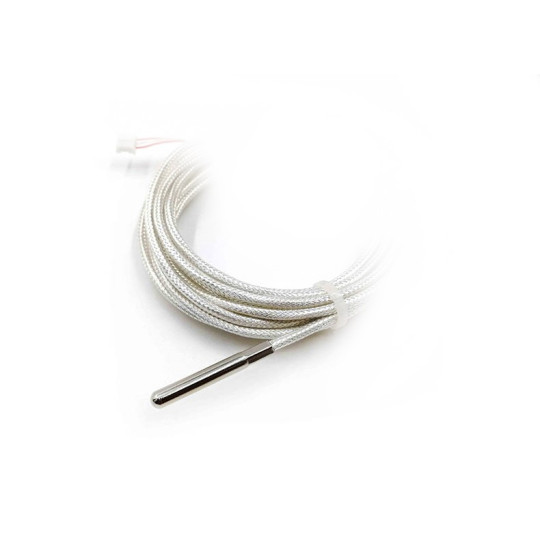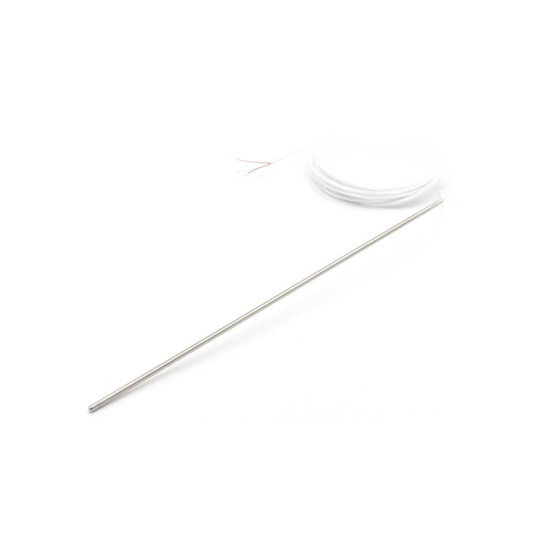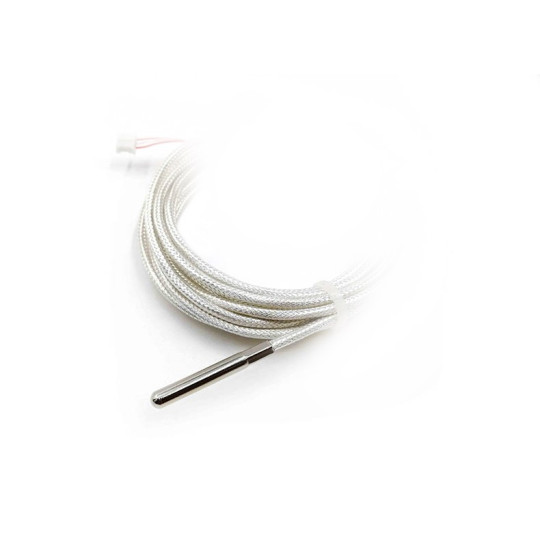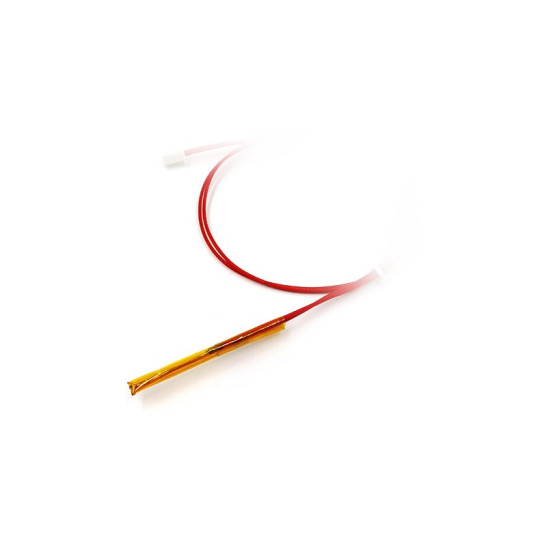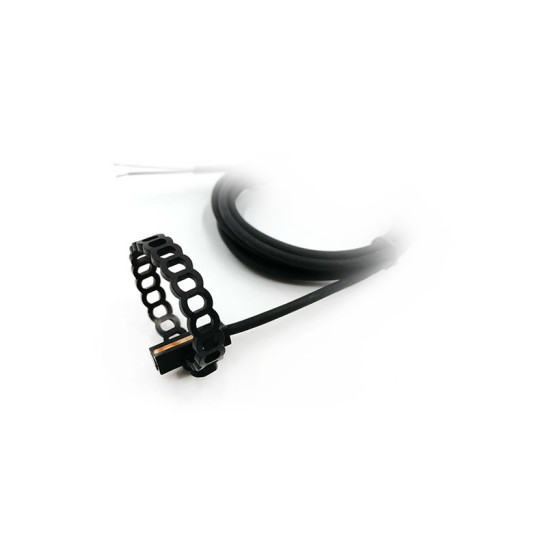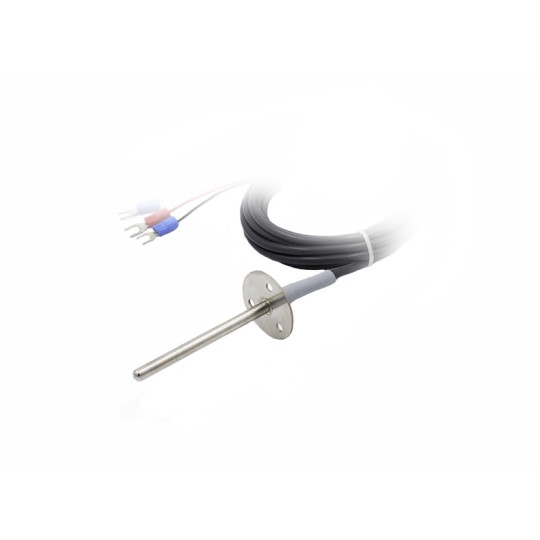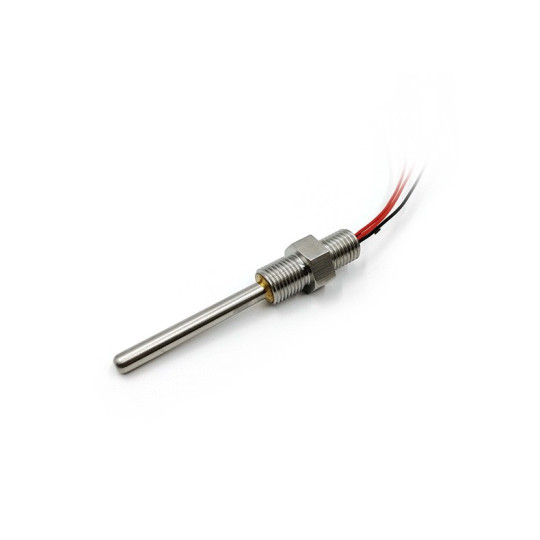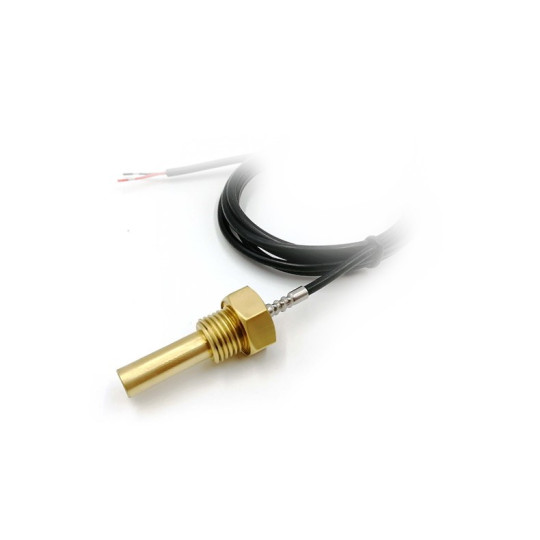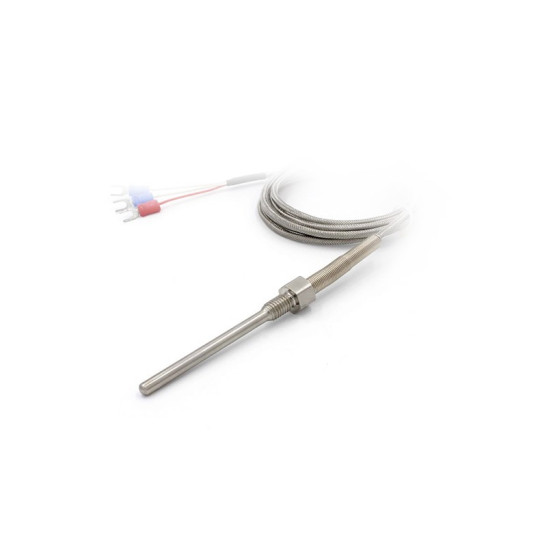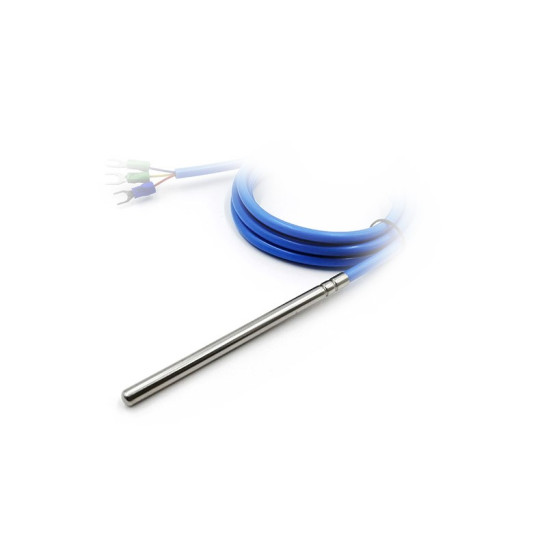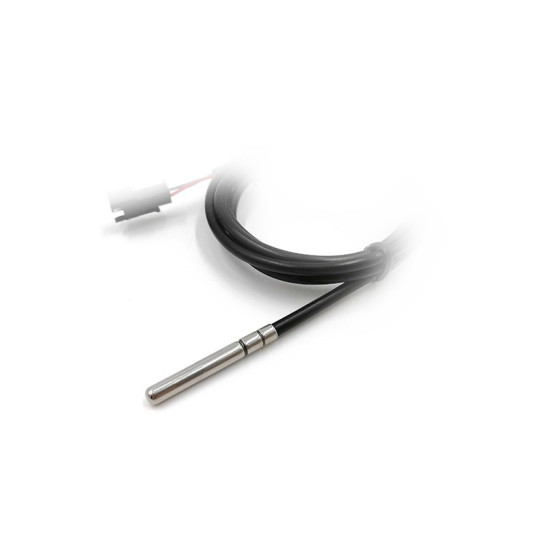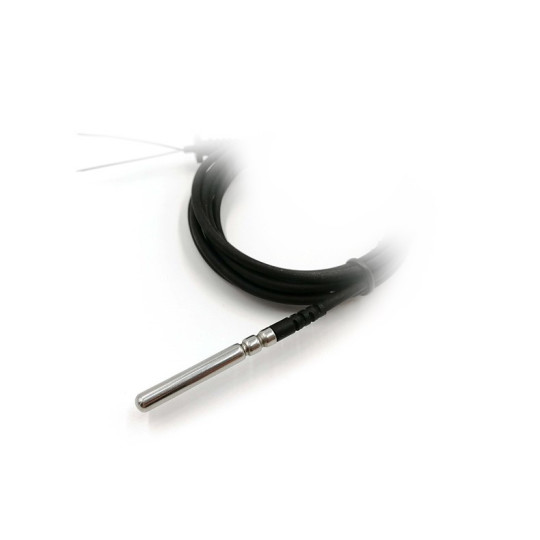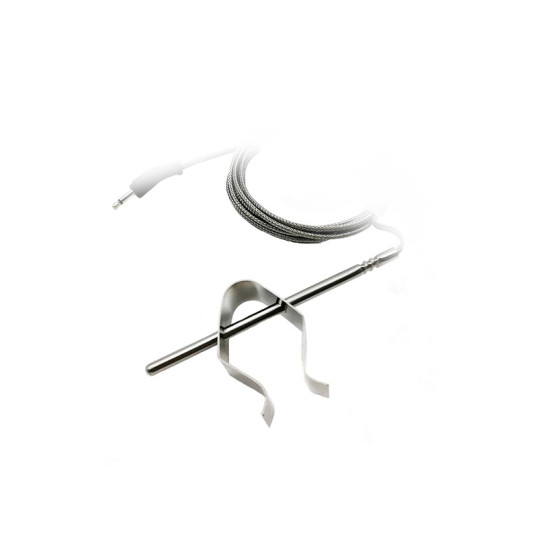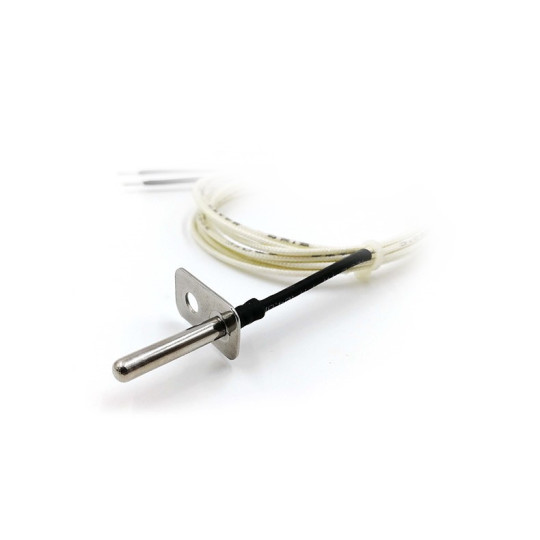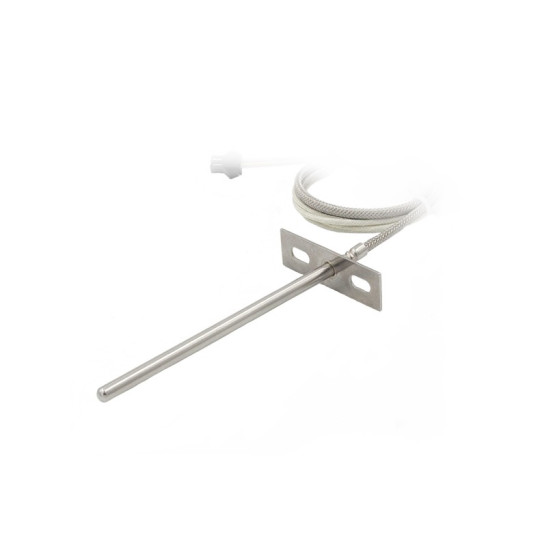ALL ABOUT
Pt100 resistance sensors

A resistance thermometer is a type of temperature sensor. It consists of an element whose resistance varies according to the evolution of the temperature. Common names for resistance thermometers include RTD (short for Resistance Temperature Detector), RT, Pt100, Pt500, Pt1000.
A Pt100 element consists of a coil of wire or a deposited film of pure metal. The resistance of the element increases with temperature in a known and repeatable way. Pt100s exhibit high accuracy over a wide temperature range.
- Measurement range: -200 to 700ºC
- Sensitivity: The voltage drop across an RTD provides a much greater output than a thermocouple probe.
- Linearity: Platinum and copper RTDs produce a more linear response than thermocouples or thermistors. RTD nonlinearities can be corrected with the proper design of resistive bridge networks.
The most commonly used material is platinum with a resistance of 100 ohms at 0ºC and a temperature coefficient (Alpha) of 0,00385 ohms/ºC. Other elemental materials also used are copper, nickel and nickel-iron. Platinum elements predominate because of their wider range, and because platinum is the most repeatable and stable of all metals.
| CLASS B | ±0,12 Ohm; OR ± 0,30ºC |
| CLASS A | ±0.06 Ohm; OR ± 0.15ºC |
| 1/3 B (1/3 DIN) | ±0,04 Ohm; OR ± 0,10ºC |
| 1/10 B (1/10 DIN) | ±0.012 Ohm; OR ± 0.03ºC |
Rt = R0 * (1 + A * t + B * t2 + C * (t-100) * t3)
Or:
Rt is the temperature resistance t
R0 is resistance at 0 ° C
A = 3,9083 E-3 B = -5,775 E-7 C = -4,183 E-12 (below 0 ° C) or C = 0 (above 0 ° C)
For a PT100 measurement probe, a change in temperature of 1°C will cause a change in resistance of 0,384 ohm. Even a small error in the resistance measurement (for example, the resistance of the wires leading to the sensor) can cause a large error in the temperature reading. For precise temperature control, PT100 resistance sensors have four leads: two to carry the sensing current and two to measure the voltage across the sensor element. It is also possible to obtain three-wire sensors, although these operate on the (not necessarily valid) assumption that the resistance of each of the three wires is the same.
There are different connection types for PT100 measuring devices.
standard color code; A is white, B is red.
 |  |  |  |
| 2 Yarn : Basic connection where the conductor is short. No compensation wire. | 3 wires: The most common with 3 connection wires, the instrument measures the resistance of wire B and deduces it from its measurement. | 4 Yarn : The 4-wire connection is the most accurate measurement. The instrument measures the resistance of the four conductor wires and deduces it from its measurement. | Dual Pt100 : Double 3-wire RTD connection with two different sensitive elements. |
No maintenance is required for PT100 RTD temperature sensors, however, scheduled calibration checks at ice point (0ºC) are recommended.
Prepare an insulated container at least 300 mm deep and with an internal diameter of 100 mm.
at least 300 mm deep and with an internal diameter of 100 mm.
The procedure should be as follows:
(a) Fill the insulated container with finely divided ice made from distilled water
Note: If the chilled water of distilled water is not available, the transparent part of a block of commercial ice will suffice, provided that all surfaces are first washed with distilled water.
b) Mix the ice with distilled water previously cooled using the stirrer, then drain the excess water. The ice should be glassy but there should be no remaining open water.
c) Connect the thermometer to a suitable resistance measuring device and adjust so that the electric power dissipated in the element does not exceed 1 m W.
d) Immerse the measuring instrument in the ice so that the element is at a depth of at least 150 mm. Make sure that the bottom of the PT100 resistance thermometer is at least 30 mm from the bottom of the vessel. Note: Thermometers with stem lengths less than 150 mm should be submerged to their maximum possible depth.
e) When the element reaches equilibrium with the ice, temperature measurements can be taken. Measurements made with direct current should be made with current in both forward and reverse directions. Note: The time it takes for the element to reach equilibrium is normally around 3 minutes.
f) Decrease the immersion depth of the element by 50 mm or 20% of the length of the rod, whichever is less.
g) Repeat step (e). If the change in reading is more than one-third of the appropriate tolerance, the entire procedure should be repeated with fresh ice.
Accuracy: RTD PT100 sensors; at 0 ºC = Class B +/- 0,3 ºC, Class A +/- 0,15 ºC, 1/10 DIN = +/- 0,03 ºC

Current through the PT100 resistance sensor will cause heating: for example, a 1 mA sense current through a 100 ohm resistor will generate 100 μW of heat. If the sensor element fails to dissipate this heat, it will report an artificially high temperature. This effect can be reduced either by using a large sensor element or by ensuring that it is in thermal contact with its surroundings.
Using a sense current of 1 mA will give a signal of only 100 mV. Because the change in resistance for one degree Celsius is very small, even a small error in measuring the voltage across the sensor will produce a large error in measuring the temperature.
For example, a voltage measurement error of 100 μV will give an error of 0,4°C in the temperature reading. Similarly, an error of 1 μA in the sensing current will give an error in the temperature indication of 0,4°C.
Due to the low signal levels, it is important to keep cables away from electrical cables, motors, equipment and other devices that may emit electrical noise.
Using a shielded cable, with the screen grounded at one end, can help reduce interference. When using long cables, it is necessary to verify that the measurement system is able to withstand the resistance of the cables.
I CAN'T FIND MY PROBE , HOW CAN YOU HELP ME?
We will always be able to offer you the reliable, precise and robust probe you are looking for.
On our website we present a wide variety of temperature probes. Know that you can also customize your product on all specifications or make a request starting from a technical drawing in order to create your probe. To this end, do not hesitate to contact us for a tailor-made offer. We then take care of delivering your temperature probe to you as soon as possible.
